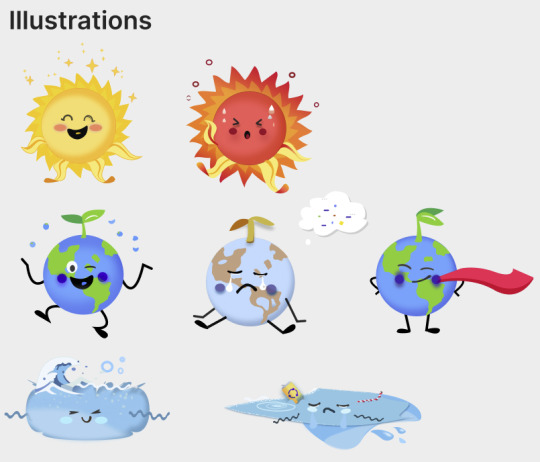#Adobe Systems
Text
0 notes
Text
Korvo:

Terrance who’s nervous system is this again?
#lamo drew this in my digital art class <3#cw body horror#?? I dunno it’s the nervous system#anyway LAMO YOULL NEVER BELIEVE WHOS BIG INTO DRAWING NERVOUS SYSTEMS RN#yeah it’s me#anyway this is so very much a deleted scene#like come on they for sure have stolen someone’s nervous system#anyway I can really hear this in korvos voice!!#korvo opposites#solar opposites#solar opposites fanart#artists on tumblr#art#finished piece#illustration#my art#digital art#2024 art#tervo#guys if I keep this up I will make a nervous system oc#they are such a married couple <3#adobe photoshop#it’s actually so much more better to draw on then illustrator SORRY#mindlessly doodling
80 notes
·
View notes
Note
What do you do in a multimedia graphic design course? May I ask in which country you study? Just curious and ignorant here, no need to answer if you don't feel like it. Wish you well!
In the Philippines, universities are limited to categories in relation to art industry. And Art schools or avail courses are FAR from where I live. Considering I can't leave my fam, I couldn't afford to move out so I sniffed out the closest university I can find with a BMMA course instead.
MULTIMEDIA ARTS, as stated in the name‐ explores A LOT in the media from physical to digital but most likely digital! Its purpose? COMMUNICATION. Messing around the computer and stuff like comp courses but ofc for an audience. Since the school is specializing MMA with graphic design, we study Adobe programs (IND,AE,PS,AI,XD) as it is an industry standard for graphic designers. We learn to appreciate, practice, and make both good art and design ::)
We also learn other things ( although short & just the fundamentals ) such as 2D and 3D animation, 3D modelling, Motion graphics, product packaging, Printing, Web Designing, client management/advance communication, etc.
#messyr#the school im in is a scam but its too late to turn back now so im holding on what i can afford#i just want to graduate with a license man bUT LMAOOO SCHOOL SYSTEM IS SO SH*T SO ARE OTHER PROFESSORS 😭 I failed 2 subjects already#i gotta repeat em next S.Y ( extra cost )#it's so fast phased too#Other than complaining- I learned how to love this course! I HAVE NO EYE FOR DESIGN I TELL U THAT. But I am willing to learn#since this is what i chose anyway. most of the time still self taught but i apply profs teachings ^^#WE CURRENTLY UNDER AN ADOBE EXAM THIS MONTH TBH IM CRYING
58 notes
·
View notes
Text





"Hey Michelle, what have you been up to?"
☝️
#Do not want to reveal too much of my work prior portfolio launch. But yeah here's a peek!#I designed and drew everything myself by hand#I hadn't ever created art in Adobe or made any fucking app frame before July. But look at how it pops :)#Arranging and putting together my design system (last image) for this product right now - which means the project is nearly finished#Planned a last feedback loop with the target users for this week. Then translating the research trajectory into a smooth portfolio narrativ#Then it's a wrappp
17 notes
·
View notes
Text

太陽系惑星のストックイラストです。
ストックイラストを始めようと考えた時から描きたかったイラストで、水風船のようなかわいい惑星をイメージして描きました。PIXTAで販売中です。Adobe Stockからの販売も始まりました。
This is a stock illustration of a solar system planet.
This is an illustration I have wanted to draw since I thought of starting stock illustration, and I drew it with the image of a cute planet like a water balloon. Now on sale at PIXTA. Adobe Stock is now also available.
[pixta] pixta.jp/illustration/114260527
[Adobe Stock] stock.adobe.com/jp/stock-photo/id/806719948
#art#illustration#my art#イラスト#オリジナルイラスト#artists on tumblr#cute#kawaii#pixta#stock#space fantasy#planet art#original art#創作#original#solar system planet#stock illustration#adobe stock#adobe
16 notes
·
View notes
Text
does anyone remember the name of that adobe illustrator alternative/substitute that runs in your browser?
i need to update a resume i made in illustrator, but now i don't have that program anymore and would rather not start from scratch in *shudder* krita.
#krita i love you but your text function is terrible.#i know krita can run adobe files#but when i tried that layer was just a static png instead of an editable folder#which is weird vc krita has its own folder system#but i digress#it also didn't show layers that i apparently had non-visible. so they were just empty white layers :(
19 notes
·
View notes
Text
my mom's work's systems got affected and lord i am so glad i dont work on fridays
#changing my schedule to prep for my conversion studies was the best choice i made last year actually#we use A LOT of systems and all of them are adobe and aws EXCEPT PHONES so... uh.... good luck to the rest of the team 💙 👍#thank god im over on PTO because my manager can't call me in hehe#crowdstrike outage
2 notes
·
View notes
Text

A Spaceship GIF/video I created using Adobe Photoshop.
#art#adobe photoshop#animation#2d animation#pixel animation#pixel art#2d art#animated gif#outer space#space#spaceship#aliens#planets#galaxy#astronomy#solar system
3 notes
·
View notes
Text
I managed to scribble down a little bird last night while Fistfighting after effects 👍

#arknights#irene#irene arknights#adobe i hate you so much you made me restart my poor laptop so your silly program could run properly#this woman helped me stay awake while i waited for the system to boot up again i love her so much
16 notes
·
View notes
Text
OH FUCK YEAH WE'RE IN BUSINESS BABEYYYY!!!
#it might be because my adobe cloud account is technically under a different email address#because i got a new one after changing my name in the school's system and THAT'S the one that got deleted#but the adobe account is under the email address that uses my legal name so hehe :)#personal
2 notes
·
View notes
Text
Enterprise-F Master System Display
Here is the Master System Display of the U.S.S. Enterprise-F in Star Trek Unity.

View On WordPress
#adobe photoshop#artistatwork#CBS#Commissions Open#Concept Art#deckplan#Digital Art#master system display#MSD#Odyssey Class#Paramount#schematic#Star Trek#star trek online#starfleet#starfleetship#starship#starship design#STO#vehicle desgin#Wacom Tablet
2 notes
·
View notes
Text

This illustration is a glow-up I did last year of an older piece from 2016. See the original at my archived blog, Studio Hromi Archive.
#my art#concept art#sketch#astronomy#anatomy#moon#bones#hands#skeletal system#galaxy#stars#photoshop#adobe photoshop#graphite#mural#sciart#scientific illustration#ideas#planning#sketchbook#glow up#glow-up#before and after#before and current#illustration#digital illustration
4 notes
·
View notes
Note
What course did you take?
Bachelor of Multimedia Arts except I'm an academic failure:
more about this course
#messyr#IM SO ACADEMICALLY COOKED IT'S NOT EVEN FUNNY AAAAAAAHAHAHA#IM GOING TO REPEAT SEVERAL SUBJECTS FOR NEXT SCHOOL YEAR WHILE DOING A CAPSTONE IMMA KMS THIS FUCKASS SCHOOL IS ALL ABOUT $$$$$ IM LIKE ☠️☠#+ IM FAILING A SUBJECT ON PURPOSE TO REPEAT IT BC PROF IS SO ABSENT/SHIT THAT I AINT WASTING MY TIME NOR EFFORT THERE#ADOBE U MF- ADOBE LICENSE TRAINING I SWEAR TO * GOD * THE SYSTEM HERE IS SO SHT WHY IS THIS COUNTRY SO FOUL IN CREATIVES INDUSTRY I SWEAR
50 notes
·
View notes
Text
Pondering when people have a type...
yknow, romantically or queerplatonically. I dreamt once that Prince Eric from the little mermaid was chilling with Ariel and I was all he clearly has a type of either blond or red head women who have a joie de vivre/spark of energy in them aka high energy personality wise. I know I have a Type even though I don't have the words to describe it yet, etc.
#is this for homestuck related reasons#maybe#shipping#romance#queerplatonic#type#romantic types#i'm thinking of making a sorting system for types#based on the many adobe software logos#colors and letters and shapes basically#hs#homestuck#quadrants
6 notes
·
View notes
Text
Adobe 解決方案如何推動台灣與香港企業的數位轉型
隨著全球市場的快速變化,企業必須不斷適應數位化的需求,以保持競爭力。對於台灣與香港的企業而言,Adobe 解決方案提供了一個強大的工具,幫助他們實現數位轉型,提升業務效率並改善客戶體驗。本文將探討 Adobe 如何透過其一系列創新解決方案,推動台灣與香港企業的數位化進程。
1. 全面的數位行銷平台
Adobe Experience Cloud 是 Adobe 的旗艦產品之一,它為企業提供了一個綜合的數位行銷平台,從客戶數據分析、跨渠道營銷到自動化營銷策略,無一不包。對於台灣與香港的企業,Adobe Experience Cloud 能夠幫助他們 深入了解客戶行為,並根據這些數據制定個性化行銷策略,從而提高轉換率與品牌忠誠度。

2. 簡化內容創作與管理
無論是台灣還是香港的企業,數位內容的創作和管理都是數位轉型的重要組成部分。Adobe Creative Cloud 為企業提供了領先的設計工具,如 Photoshop、Illustrator 和 Premiere Pro,幫助團隊更有效地創作內容。與此同時,Adobe Experience Manager (AEM) 則提供了內容管理的強大功能,讓企業能夠更快速地推出和更新網站、應用程式及其他數位資產,確保內容始終保持新鮮和相關性。
3. 提升客戶體驗與互動
客戶體驗是現代商業成功的關鍵因素之一。Adobe Target 透過人工智慧技術,幫助企業根據客戶的喜好與行為,提供個性化的體驗。台灣與香港的企業可以藉助 Adobe Target 實現精準的行銷活動,確保每位客戶在訪問網站或應用程式時,都能獲得量身訂做的內容。
4. 強大的數據分析與洞察
數據驅動的決策對於現代企業來說至關重要,特別是在競爭激烈的台灣與香港市場中。Adobe Analytics 提供了深入的數據分析能力,幫助企業了解其數位行銷策略的效果,並及時調整。通過追蹤用戶的行為路徑,企業可以更好地理解客戶需求,進而優化其行銷和業務策略。
5. 跨渠道的無縫整合
現代消費者通過多種渠道與品牌互動,從網站到社交媒體,再到電子郵件行銷。Adobe 的解決方案,如 Adobe Campaign,能夠幫助企業無縫整合這些渠道,實現跨平台的行銷協同。這對於擁有大量線上及線下活動的台灣與香港企業尤為重要,因為他們可以藉此確保每個渠道的訊息一致性,並根據實時數據調整行銷活動。

結論
Adobe 解決方案憑藉其強大的數位行銷、內容管理與數據分析工具,已成為台灣與香港企業數位轉型的首選合作夥伴。企業透過 Adobe 的創新技術,不僅可以提升營運效率,還能改善客戶體驗,從而在日益數位化的市場中取得成功。
了解更多 Adobe 解決方案如何幫助您的企業數位轉型,請訪問 Leads Technologies。
部落格來源網址
#cms hong kong#cms taiwan#Adobe Analytics#Adobe Campaign#Adobe Commerce#Digital Asset Management System#Adobe Journey Optimizer#Adobe Customer Journey Analytics#Magnolia CMS#Adobe Experience Platform#Adobe Partner#Adobe Partner Hong Kong#Adobe Partner Taiwan#Adobe Solution Partner#Adobe Target#TVP#Technology Voucher Programme#Adobe Experience Manager#tvp application#tvp申请#科技券 申请 指南#網站設計 台灣#網站設計香港#科技券#科技券 供應商#科技券申请#香港科技券#AEM公司#adobe 台湾#adobe香港
0 notes
Text
Who is Winning the AI Race in 2024? Big Tech’s Race to AGI
New Post has been published on https://thedigitalinsider.com/who-is-winning-the-ai-race-in-2024-big-techs-race-to-agi/
Who is Winning the AI Race in 2024? Big Tech’s Race to AGI
Artificial Intelligence (AI) has become the most fiscussed technological advancement of this decade. As we push the boundaries of what machines can do, the ultimate goal for many tech giants is to achieve Artificial General Intelligence (AGI) – a hypothetical form of AI that can understand, learn, and apply its intelligence to solve any problem, much like a human brain.
The race to AGI is not just a matter of technological supremacy; it’s a quest that could reshape the very fabric of our society. The potential applications of AGI are vast and transformative, ranging from solving complex global issues to revolutionizing industries across the board. This is why the world’s leading tech companies are investing billions of dollars and countless hours into AI research and development.
In this article, we’ll explore the efforts of key players in the AI race, including Google, NVIDIA, Microsoft, OpenAI, Meta, and others. We’ll delve into their strategies, achievements, and the unique approaches they’re taking to push the boundaries of AI technology.
Understanding AGI
What is AGI?
AGI, often described as the “holy grail” of artificial intelligence, is envisioned as a system capable of performing any intellectual task that a human can. However, defining AGI has proven to be as elusive as achieving it. Geoffrey Hinton, a pioneering figure in AI, notes that while AGI is a “serious, though ill-defined concept,” there is little consensus on what it precisely entails. Hinton prefers the term “superintelligence” to describe AGI systems that would surpass human cognitive abilities.
The Elusive Nature of AGI
Leading tech giants, including OpenAI, Google, Meta, Microsoft, and Amazon, are at the forefront of this race. Each company brings its unique strengths and strategic goals to the table. OpenAI, for example, is deeply committed to ensuring that AGI, once developed, benefits all of humanity. The organization has set up a governance structure where its board of directors will decide when their systems have achieved AGI, a milestone that will significantly impact their partnership with Microsoft.
Google
Google has long been at the forefront of AI research and development, with two main divisions spearheading its efforts: DeepMind and Google Brain.
A. DeepMind and its achievements
DeepMind, acquired by Google in 2014, has been responsible for some of the most groundbreaking achievements in AI. Their AlphaGo program famously defeated the world champion in the complex game of Go in 2016, a feat many thought was decades away. This was followed by AlphaZero, which achieved superhuman performance in chess, shogi, and Go through self-play reinforcement learning.
More recently, DeepMind has made significant strides in protein folding with AlphaFold. This AI system can predict protein structures with remarkable accuracy, potentially revolutionizing drug discovery and our understanding of diseases.
B. Google Brain and TensorFlow
Google Brain, the company’s in-house AI research team, has been instrumental in developing tools and frameworks that have accelerated AI research worldwide. TensorFlow, an open-source machine learning library developed by Google Brain, has become one of the most widely used tools for building AI models.
Google Brain has also made significant contributions to natural language processing with models like BERT (Bidirectional Encoder Representations from Transformers), which has improved Google’s search results and language understanding capabilities.
C. Recent developments and future plans
Google continues to push the boundaries of AI with projects like LaMDA (Language Model for Dialogue Applications), which aims to make conversational AI more natural and context-aware. The company has also been working on integrating AI more deeply into its products, from Google Search to Gmail to Google Photos.
In terms of hardware, Google has developed its own AI chips, called Tensor Processing Units (TPUs), optimized for machine learning workloads. These chips power many of Google’s AI services and are also available to customers through Google Cloud.
Looking ahead, Google’s AI strategy seems focused on developing more general and versatile AI systems that can handle a wide range of tasks, inching closer to the concept of AGI. The company is also heavily invested in quantum computing research.
NVIDIA’s Role in the AI Ecosystem
While NVIDIA may not be a household name like Google or Microsoft, it plays a crucial role in the AI ecosystem as the leading provider of hardware that powers AI computations.
A. GPU dominance in AI hardware
NVIDIA’s Graphics Processing Units (GPUs) have become the de facto standard for training and running AI models. Originally designed for rendering graphics in video games, GPUs turned out to be exceptionally well-suited for the parallel processing required in AI computations.
NVIDIA’s data center revenue, largely driven by AI-related sales, has been growing rapidly. In 2022, the company introduced its H100 GPU, based on the new Hopper architecture, which promises significant performance improvements for AI workloads.
B. NVIDIA’s AI software stack
Beyond hardware, NVIDIA has developed a comprehensive software stack for AI development. This includes CUDA, a parallel computing platform and programming model that allows developers to harness the power of NVIDIA GPUs for general-purpose processing.
NVIDIA also offers tools like cuDNN (CUDA Deep Neural Network library) and TensorRT, which optimize deep learning performance on NVIDIA GPUs. These tools are widely used in the AI community and have contributed to NVIDIA’s dominant position in the AI hardware market.
C. Partnerships and collaborations
NVIDIA has formed strategic partnerships with many leading tech companies and research institutions. For instance, it works closely with autonomous vehicle manufacturers to provide AI-powered solutions for self-driving cars. The company has also collaborated with healthcare institutions to apply AI in medical imaging and drug discovery.
In 2022, NVIDIA announced a partnership with Booz Allen Hamilton to develop AI-enabled cybersecurity solutions for the U.S. government and critical infrastructure. This highlights the growing importance of AI in national security and defense applications.
Microsoft’s AI Strategy
Microsoft has strategically positioned itself as a leader in AI by leveraging partnerships and investing in key AI startups. The company’s $13 billion investment in OpenAI has provided it with exclusive access to OpenAI’s models, which have been integrated into Microsoft products like GitHub Copilot and the Azure AI platform.
A. Azure AI and cloud services
Microsoft’s cloud platform, Azure, offers a wide range of AI services that allow businesses to incorporate AI into their applications. These services cover areas such as machine learning, computer vision, natural language processing, and speech recognition.
Azure Machine Learning, a cloud-based environment for training, deploying, and managing machine learning models, has become a popular choice for enterprises looking to implement AI solutions. Microsoft’s strategy of providing easy-to-use AI tools has helped democratize AI development and accelerate its adoption across various industries.
B. AI integration across Microsoft products
Microsoft has been steadily integrating AI capabilities across its product lineup. In Microsoft 365 (formerly Office), AI powers features like smart compose in Outlook, automatic slide design in PowerPoint, and data analysis in Excel.
Windows 11 has seen increased AI integration with features like Windows Studio Effects, which uses AI for background blur, eye contact, and automatic framing in video calls. The company has also introduced AI-powered features in its Edge browser and Bing search engine, leveraging large language models to provide more interactive and informative search experiences.
OpenAI’s Rapid Progress
OpenAI remains a central figure in the AI landscape, particularly with its mission to develop AGI. The company has been a pioneer in creating some of the most advanced language models, including GPT-4 and the upcoming GPT-5. OpenAI’s models are not only leading in terms of technical capability but also in commercial integration, thanks to its deep partnership with Microsoft.
OpenAI’s AGI ambitions are well-documented, with CEO Sam Altman stating that achieving AGI would represent “the most powerful technology humanity has yet invented.” The company’s approach to AI development balances cutting-edge innovation with a strong emphasis on ethical considerations and societal impact. However, the high costs associated with training large models have necessitated significant external funding, including talks with investors like the U.A.E. government to secure up to $7 trillion for future AI chip manufacturing projects
A. GPT series and its impact
OpenAI’s most notable achievement has been the development of the GPT (Generative Pre-trained Transformer) series of language models. GPT-3, released in 2020, was a game-changer in the field of natural language processing, demonstrating an unprecedented ability to generate human-like text.
The release of GPT-4 in 2023 further pushed the boundaries of what’s possible with language models. GPT-4 demonstrated improved reasoning capabilities, reduced hallucinations, and the ability to handle multimodal inputs (text and images). These models have found applications in various fields, from content creation to code generation to automated customer service.
B. DALL-E and multimodal AI
In addition to text generation, OpenAI has made significant strides in image generation with DALL-E. This AI system can create unique images from text descriptions, showcasing the potential of AI in creative fields. The latest iteration, DALL-E 3, improved the quality and accuracy of generated images, while also introducing features like inpainting and outpainting.
These developments in multimodal AI – systems that can work with different types of data like text and images – represent a significant step towards more general AI systems.
Meta’s AI Initiatives
Meta, under the leadership of CEO Mark Zuckerberg, has shifted its focus towards developing Artificial General Intelligence (AGI). Meta’s strategy involves building AGI systems that can perform a wide range of complex tasks as well as, or better than, humans. This ambitious goal reflects Meta’s broader vision of integrating advanced AI across its vast ecosystem of apps and services.
To support this effort, Meta is heavily investing in computational power, with plans to amass over 340,000 of Nvidia’s H100 GPUs by the end of 2024. This immense computational capability is crucial for training large-scale AI models like LLaMA 3, which is was recently launched.
A. PyTorch and open-source contributions
One of Meta’s most significant contributions to the AI community has been PyTorch, an open-source machine learning library. PyTorch has gained widespread adoption in the research community due to its flexibility and ease of use, particularly for deep learning applications.
Meta AI, the company’s AI research division, regularly publishes its research and releases open-source tools, contributing to the broader AI ecosystem. This open approach has helped Meta attract top AI talent and stay at the forefront of AI research.
B. AI in social media and the metaverse
Meta leverages AI extensively across its social media platforms (Facebook, Instagram, WhatsApp) for content recommendation, ad targeting, and content moderation. The company’s recommendation algorithms process vast amounts of data to personalize user experiences.
C. Recent breakthroughs and challenges
In 2024, Meta announced several AI breakthroughs, including Segment Anything Model (SAM), a new AI model for image segmentation that can identify and outline objects in images and videos with remarkable accuracy. They also introduced series of ne of the most popular open source LLM called LLaMA (Large Language Model Meta AI).
However, Meta has faced challenges, particularly in content moderation. The company has struggled to effectively use AI to combat misinformation and hate speech on its platforms, highlighting the complexities of applying AI to real-world social issues.
Other Notable Players
IBM continues to be a major player in AI with its watsonx platform, which has evolved significantly since its inception. IBM’s focus has shifted towards making AI more open, accessible, and scalable for enterprises. The watsonx platform now includes a suite of AI-powered automation tools and governance capabilities that enable businesses to integrate and manage AI solutions more effectively across various domains like IT operations, cybersecurity, and customer service.
Recently, IBM introduced generative AI capabilities to enhance its managed Threat Detection and Response Services. This includes a new AI-powered Cybersecurity Assistant designed to streamline and accelerate the investigation and response to security threats, further leveraging IBM’s broader AI capabilities built on the watsonx platform (IBM Newsroom) (IBM Newsroom).
IBM is also fostering strategic partnerships with companies like AWS, Adobe, Meta, and Salesforce to integrate its AI solutions into broader ecosystems, ensuring that its AI technologies are both versatile and widely adopted across industries (IBM TechXchange Community) (IBM – United States).
B. Amazon’s AI Services
Amazon remains a dominant force in AI through its Amazon Web Services (AWS) platform, which provides a comprehensive suite of AI and machine learning tools. AWS’s Amazon SageMaker is a key offering, enabling developers to build, train, and deploy machine learning models at scale.
In addition to enterprise AI services, Amazon continues to innovate in consumer AI products with Alexa, its virtual assistant, which utilizes advanced natural language processing and machine learning to interact with users. The company’s focus on integrating AI seamlessly into its e-commerce and cloud services has positioned it as a leader in the AI space.
C. Apple’s On-Device AI Approach
Apple’s unique approach to AI emphasizes on-device processing to prioritize user privacy. This is exemplified by features like Face ID and the broader use of machine learning models through its Core ML framework. Apple’s custom silicon, including the A-series and M-series chips, includes dedicated neural engines that power AI tasks efficiently on devices.
The company has also enhanced its AI offerings with improvements in natural language processing through Siri and advancements in computer vision with features like Live Text.
What’s Next? The Path to AGI
#000#2022#2023#2024#adobe#AGI#AGI development#ai#AI and cloud#AI chip#AI chips#AI development#AI integration#ai model#AI models#ai platform#AI Race#AI research#AI strategy#AI systems#ai talent#ai tools#AI-powered#alexa#Algorithms#AlphaFold#AlphaZero#Amazon#Amazon Web Services#Analysis
0 notes